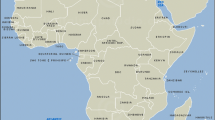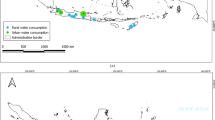Abstract
During oil and gas production, water is often extracted from geological formations along with the hydrocarbons. These “produced waters” have been discharged to Nueces Bay since the turn of the century. These effluents were found to be highly toxic, and sediments in the vicinity of the discharges were also toxic. We developed a map of wells and produced-water discharge sites in the vicinity of Nueces Bay and identified numerous unplugged wells suitable for conversion to produced water disposal wells. An economic analysis of conversion to subterranean injection of produced water indicates that most of the wells currently in production could pay out the cost of conversion to injection in one to three years. The use of one injection well for two or more water-producing wells could yield greater savings. Wells that could not support the cost of injection are small producers, and their loss would not constitute a major loss of jobs or dollars to the area. This study could serve as a useful model for evaluating the economic feasibility of conversion to injection in other areas of Texas and Louisiana.
Similar content being viewed by others
Literature Cited
Armstrong H. W., K., Fucik, J. W. Anderson, and J. M. Neff. 1979. Effects of oilfield brine effluent on sediments and benthic organisms in Trinity Bay, Texas. Marine Environ mental Research 2:55–69.
Andreasen, J. K., and R. W. Spears. 1983. Toxicity of Texan petroelum well brine to the sheepshead minnow ( Cyprinodon variegatus), a common estuarine fish. Bulletin of Environmental Contamination and Toxicology 30:277–283.
Boesch, D. F., and N. N. Rabalais. 1989. Produced waters in sensitive coastal habitats: An analysis of impacts, central coastal Gulf of Mexico. OCS Report/MMS 89-0031, US Department of the Interior, Minerals Management Service, Gulf of Mexico OCS Regional Office. New Orleans, Louisiana, 157 pp.
Carr. R. S. 1993. Sediment quality assessment survey of the Galveston Bay svstem. Galveston Bay National Estuary Program report, GBNEP-30, 101 pp.
Carr, R. S., and D. C. Chapman. 1992. Comparison of solid-phase and pore-water approaches for assessing the quality of marine and estuarine sediments. Chemistry and Ecology 7:19–30.
Caudle, C. 1995. Impact assessment of produced water discharges to Nueces Bay—August 1993. Texas Natural Resources Conservation Commission, Austin, Texas. Publication no. AS-49/SR. 30 pp.
Collins, A. G. 1975. Geochemistry of oilfield waters. Elsevier Scientific Publishing, Amsterdam, 496 pp.
Daniels, C. B., and J. C. Means. 1989. Assessment of the geno-toxicity of produced water discharges associated with oil and gas production using a fish embryo and larval test. Marine Environmental Research 28:303–307.
Din, Z. B., and A. B. Abu. 1993. Toxicity of produced water from crude oil terminals to Photobacterium phosphoreum, Chae-toceros sp., and Donax faba. Bulletin of Environmental Contamination and Toxicology 50:413–416.
Dwights. 1992a. Dwights natural gas well production histories. Dwights, Richardson, Texas, 1968 pp.
Dwights. 1992b. Dwights oil lease production histories. Dwights, Richardson, Texas, 1970 pp.
Hamilton, M. A., R. C. Russo, and R. V. Thurston. 1977. Trimmed Spearman-Karber method for estimating median lethal concentrations in toxicity bioassays. Environmental Science and Tcchnolgoy 11(7):714–719; correction 12(4):417 (1978).
Henley, D. E., and D. G. Rauschuber. 1981. Freshwater needs of fish and wildlife resources in the Nueces-Corpus Christi Bay area, Texas: A literature synthesis. US Fish and Wildlife Service, Office of Biological Services. Washington, DC, FWS/ OBS-80/10, 410 pp.
Inside F.E.R.C. 1993/1994. Gas Market Report. April 1993 through May 1994 issues. McGraw-Hill, New York.
Krause, P. R., C. W. Osenberg, and R. J. Schmitt. 1992. Effects of produced water on early life stages of a sea urchin: Stage-specific responses and delayed expression. Pages 431-444 in J. P. Ray and F. R. Englehardt (eds.), Produced water: Technological/environmental issues and solutions. Plenum Press, New York.
Morgan, B. J. T. 1992. Analysis of quantal response data. Chapman and Hall, London, 511 pp.
Pratt, W. E., and D. W. Johnson. 1926. Local subsidence of the Goose Creek oil field. Journal of Geology 7:577–590.
Railroad Commission of Texas. 1953. Special order permitting Renwar Oil Corporation to use salt water injection. Proposes its own unit No. 1 well no. 23, Turkey Creek Field, Nueces County, Texas. Hearing #4-25,756, Oil and Gas Docket No. 129. Austin, Texas, 1 p.
Railroad Commission of Texas. 1991. Oil and Gas Division annual report to the governor, vol II, 394 pp.
Railroad Commission of Texas. 1992. Hearing docket number 4-69,651 Oil and Gas Division, Railroad Commission of Texas, Austin, Texas.
Railroad Commission of Texas. 1993. Permit to dispose of non-hazardous oil and gas waste by injection into a porous formation not productive of oil and gas. Permit No. 09802. Oil and Gas Division, Railroad Commission of Texas, Austin, Texas
Roach, R. W., R. S. Carr, C. L. Howard, and B. W. Cain. 1993. An assessment of produced water impacts in the Galveston Bay system. US Fish and Wildlife Service Report, Houston, Texas, 56 pp.
Williams, R. W., and C. J. Meyers. 1991. Manual of oil and gas terms. Matthew Bender, New York, 1368 pp.
Author information
Authors and Affiliations
Rights and permissions
About this article
Cite this article
D’Unger, C., Chapman, D. & Carr, R.S. Discharge of oilfield-produced water in nueces bay, texas: A case study. Environmental Management 20, 143–150 (1996). https://doi.org/10.1007/PL00006697
Issue Date:
DOI: https://doi.org/10.1007/PL00006697




